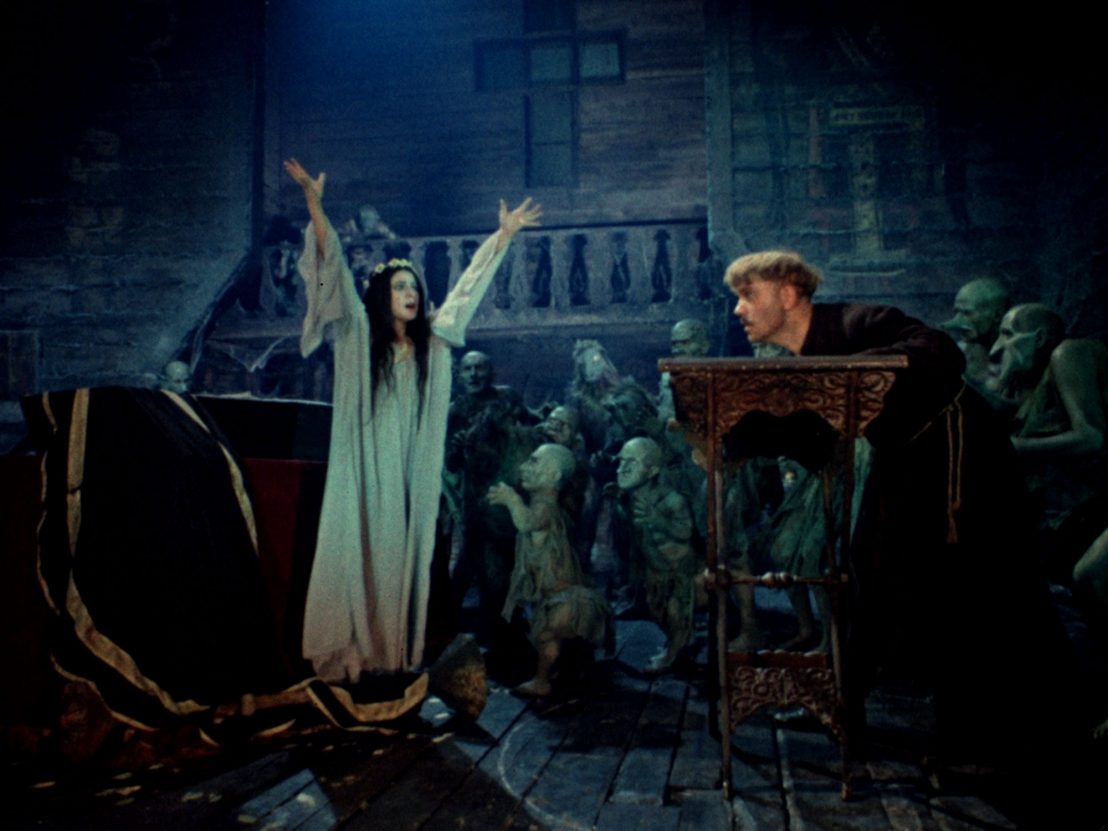
The Russian author Nikolai Gogol wrote his novella ‘Viy’ as part of a collection of short stories first published in 1835. It is a bawdy tale of the supernatural, with horny witches, errant holy men and an army of nocturnal creatures – the kind of narrative that you might expect to find in Apuleius’ ‘Golden Ass’, Geoffrey Chaucer’s ‘The Canterbury Tales’ or Jan Potocki’s ‘The Manuscript Found in Saragossa’.
In 1909, writer/director Vasilis Goncharov adapted Gogol’s conte into a short film of the same name that was also Russia’s first horror film. Goncharov’s Viy is now lost (along with other silent adaptations from 1912 and 1916), but a feature-length version, also called Viy and made in 1967, would become the first and only horror film of the entire Soviet era, as well as an influential part of the genre’s imaginarium.
It is the directorial debut of Konstantin Ershov and Georgiy Kropachyov (the latter already had credits on other films as a production designer and set decorator), although it seems likely that the more experienced Aleksandr Ptushko, artistic director on Viy, was largely responsible for the the film’s extraordinary mannered visuals and stylised colours.
On a summer break, Khoma Brutus (Leonid Kuravlyov) and two other seminary students wander off track one evening in the Ukrainian steppes and end up at a farmhouse whose owner, an elderly woman, reluctantly agrees to put them up. Later that night she visits Khoma where he is sleeping, and takes him for a ride in more than one sense, forcing herself upon him but also, as a witch, steering him through the air.
His supposed priestly chastity, her very advanced years, and some very sadomasochistic, psychosexual imagery, all give this scene a nightmarish quality, while the fact that the old woman is played by a man (Nikolay Kutuzov) only adds to the sense that we are bearing covert witness to something very transgressive. This nocturnal flight of fancy, unfolding in an ambiguous space between the real and the oneiric, will end with Khoma viciously beating the old woman with a stick to within an inch of her life, and seeing her transform into a much younger woman (Natalya Varley).
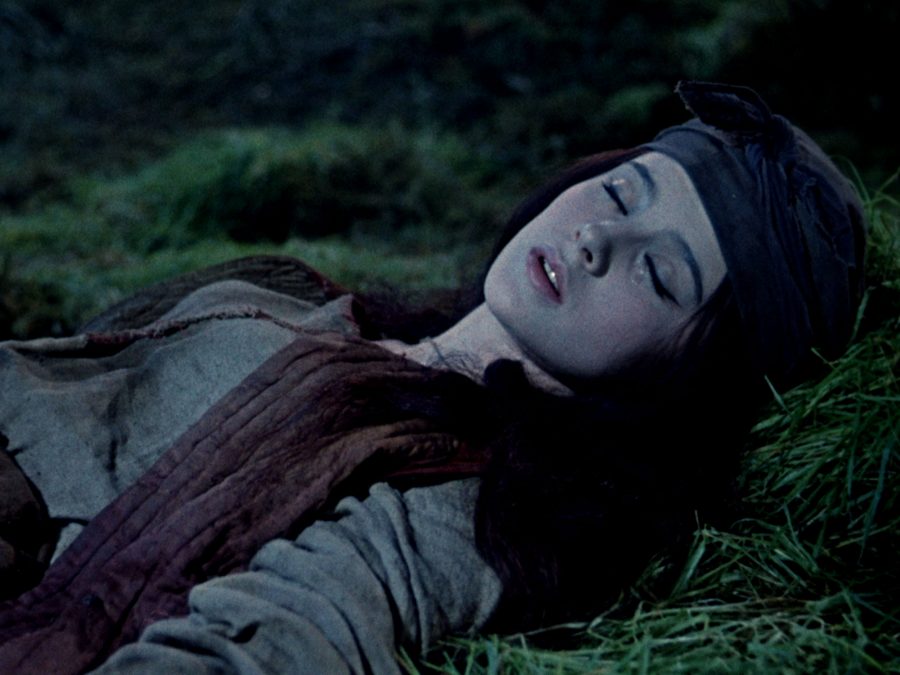
On this irrational note, the film’s second act begins. Back at the seminary, the Rector (Pyotr Vesklyarov) informs Khoma that, on her deathbed, the daughter of a powerful Sotnik (Aleksey Glazyrin) has requested Khoma by name to give her the last rites. Reluctantly tagging along with some Cossacks to the Sotnik’s village, and getting dead drunk on the way, Khoma arrives to learn that the daughter has in the meantime died. The Sotnik compels Khoma, with the threat of a whipping and the promise of a golden reward, to keep vigil for three nights over his daughter’s corpse in the village church.
The film’s third act comprises the spooky events of those three nights, as Khoma, locked inside the wooden church, must face up to the revenant, vengeful witch’s escalating assaults on his psyche and ultimately on his person. Here the ritual number three keeps recurring: there are three acts, three travelling students, three adult storks spotted standing in a nest, three versions of the same Cossack seen in Khoma’s drunken hallucinations, and three increasingly terrifying nights spent in the church. Meanwhile, it remains unclear whether Khoma is victim merely to his own overactive imagination and guilt-tinged fantasies as he sleeps first in the old woman’s farmhouse and then in the church, or whether he is truly being subjected to supernatural attacks.
Much clearer are Khoma’s failings as a study to become a man of God. The craven novice constantly violates his priestly responsibilities: he smokes, takes snuff and drinks, even while performing sacred rites in the church; he is also a womaniser, and if he at first denies this, that is only because he is also a liar. “May God strike me dead if I’m lying,” he declares to the Sotnik, insisting that he has never met the daughter before. But he knows, and we know, that he had in fact met her only a few nights earlier.
This lie gives the deadly curse that Khoma calls down upon himself a doom-laden dimension. Whatever really does happen to Khoma within the hidden confines of the church, his fate seems sealed. If by nothing else, Khoma is haunted by his own conscience, and terrified of the infernal punishments that await his many offences. “It’s not the sort of place you can escape from,” one of the Cossacks tells Khoma as the young student tries to flee the village.
Indeed, location in Viy rarely conforms to the rational, while a pervasive air of fatalism leaves the impression that from beginning to end there is little that Khoma can do to elude what is coming to him. His night terrors, whether the result of intoxicated delirium or actual otherworldly invasion, climax on the third watch in a surreal pandemonium of monstrous makeup, macabre models and shadow play.
At the centre of this devilish host and making even the local vampires and spirits cower in fright is Viy, who sees everything with his big round eyes. Viy is the perfect creature to reflect the anxieties of a trainee priest whose perverse inner life and secret desires are best kept unseen and out of the light of day. A cynical coda suggests that other seminary students are no better than Khoma in the illicit, earthly appetites that define the feeble humanity beneath their monkly robes.
Perhaps they too shall eventually fall prey to a hellish reckoning for their own crimes and misdemeanours, as they are undone by their own conflicted sense of guilt. Meanwhile, Ershov and Kropachyov offer us all a glimpse of what such long dark nights of the soul might look like from the inside.
Viy is available in a limited edition two-disc Blu-ray (also including A Holy Place, Djordje Kadijevic’s Serbian version from 1990 of the same Gogol story), as part of Eureka!’s The Masters Of Cinema Series on 15 March.
Published 15 Mar 2021
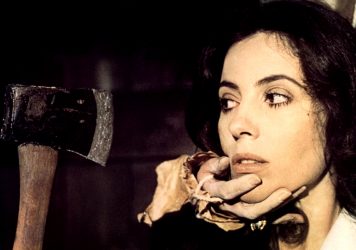
By Adam Scovell
In the 1960s and ’70s, this British film studio produced grisly tales to rival Hammer Horror.
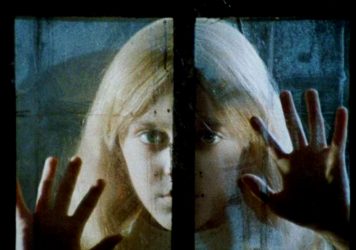
By Anton Bitel
Kill, Baby... Kill! contains one of cinema’s earliest evil children.
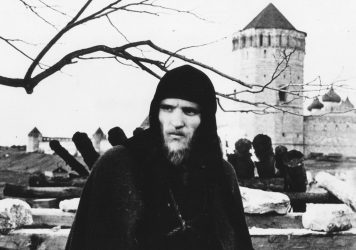
Fifty years ago the Russian director launched an epic exploration into the creation of art.